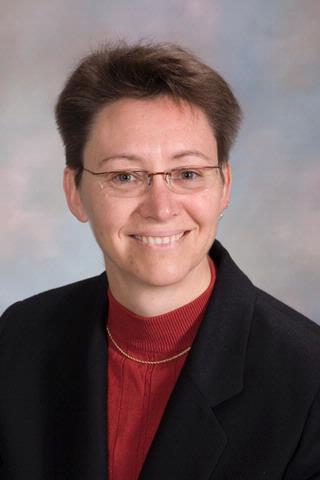
Denise C. Hocking, Ph.D.
Contact
Looking for more Information?
Visit my lab website to learn more about my research, collaborators, latest news, etc.
Denise C. Hocking, Ph.D.
About Me
Faculty Appointments
Professor - Department of Pharmacology and Physiology (SMD)
Credentials
Post-doctoral Training & Residency
Postdoctoral Research Fellow; Albany Medical College, Albany, NY.
Topic: "Mechanisms of extracellular matrix fibronectin deposition".
Advisor: Paula J. McKeown-Longo, Ph.D. 1992 - 1996
Education
PhD | Albany Medical College. Physiology. 1992
MS | Albany Medical College. Physiology. 1990
BS | Hartwick College. Medical Technology. 1983
Awards
Proctor and Gamble Career Opportunity Award, American Physiological Society. 1990
Research
Patents
Ultrasound Technology to Control the Spatial Organization of Cells and Proteins in Engineered Tissues
Issue date: June 27, 2017
Chimeric Fibronectin Matrix Mimetics and Uses Thereof
Issue date: July 07, 2015
Chimeric Fibronectin Matrix Mimetics and Uses Thereof
Issue date: February 21, 2017
Publications
Journal Articles
Comeau ES, Vander Horst MA, Raeman CH, Child SZ, Hocking DC, Dalecki D
Scientific reports.. 2023 September 2613 (1):16082. Epub 09/26/2023.
Norris EG, Pan XS, Hocking DC
The Journal of biological chemistry.. 2023 March 299 (3):102922. Epub 01/18/2023.
Norris EG, Pan XS, Hocking DC
bioRxiv : the preprint server for biology.. 2022 April 11 Epub 04/11/2022.